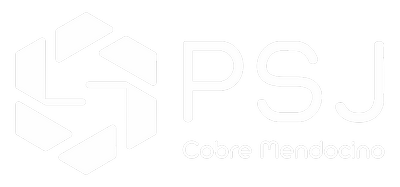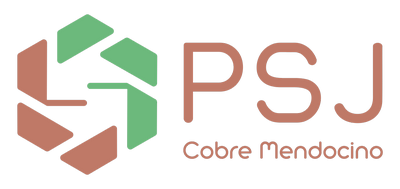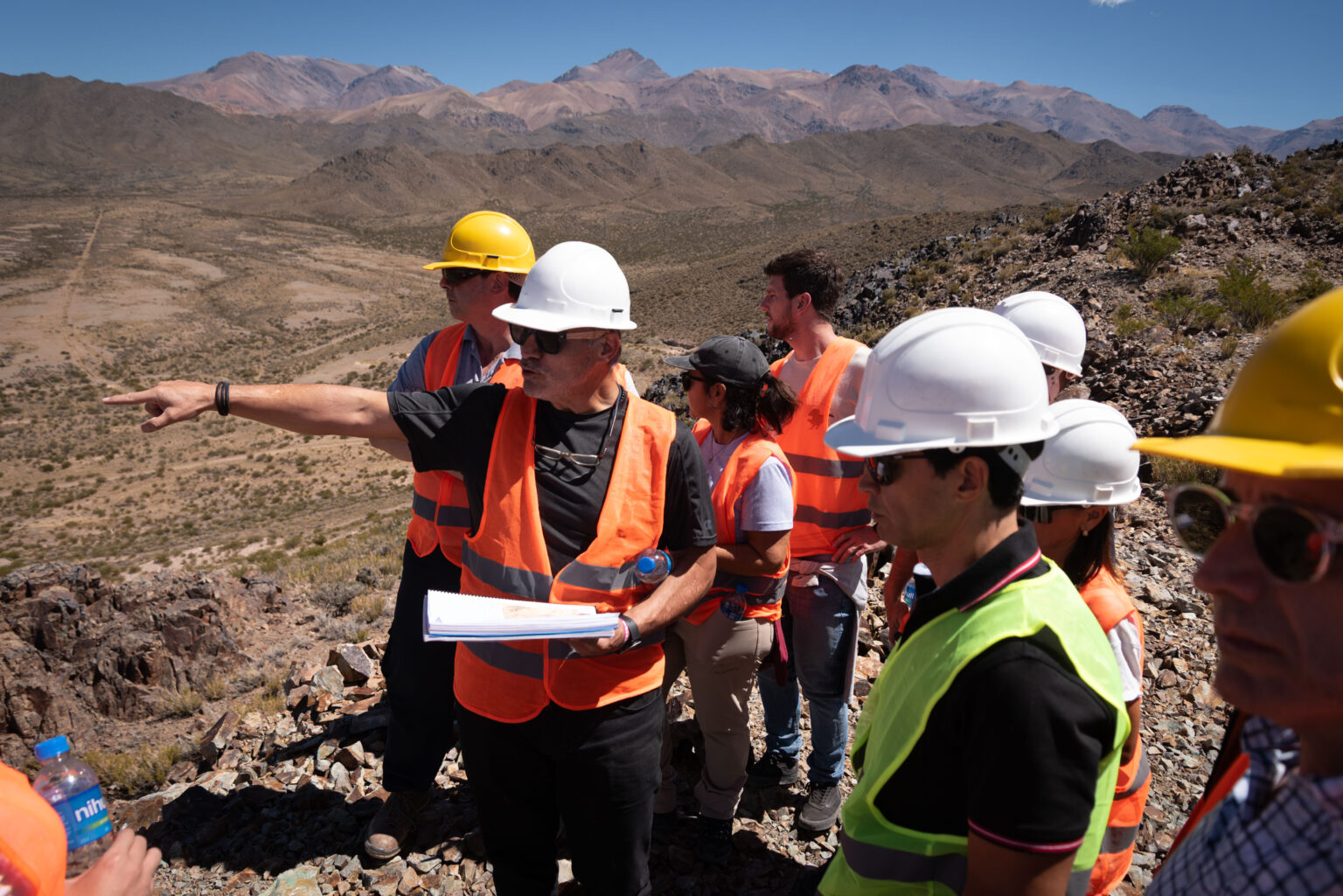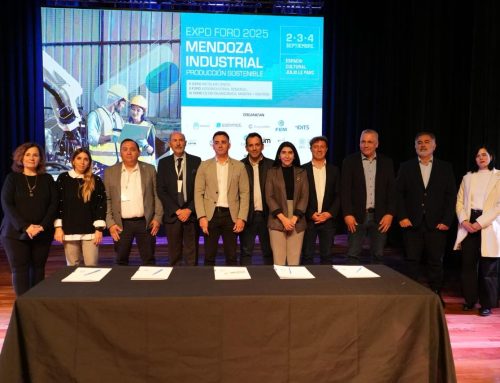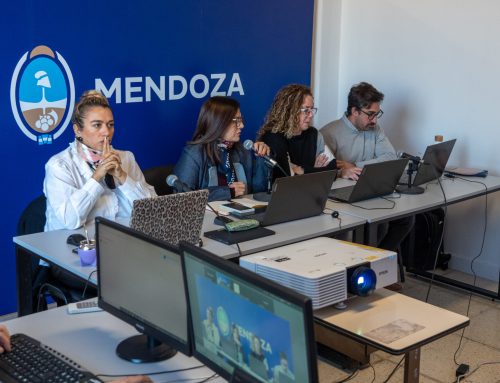he sectoral agencies of the Province, within the mining environmental evaluation procedure, have issued their sectoral reports, and at PSJ Cobre Mendocino we celebrate the diversity of technical and institutional contributions that strengthen the construction of an exemplary, sustainable, and transparent project for Mendoza, the country, and the world.
The PSJ Cobre Mendocino Project continues to advance in its environmental evaluation process with the reception and analysis of the sectoral reports issued by the different technical agencies. This process constitutes a fundamental stage in the construction of a model of mining development that is transparent, responsible, and with high technical and environmental standards.
It should be highlighted that PSJ Cobre Mendocino has one of the most complete and longest environmental baselines in the Argentine mining industry. Since 2006, continuous monitoring has been carried out in the Project area, with the participation of various technical teams and specialized professionals. Over time, the research was adjusted to the new knowledge acquired, incorporating methodological improvements and adaptations to the design of the Project. This progressive evolution made it possible to consolidate a solid, transparent, and scientifically supported information base, which sustains the comprehensive environmental evaluation of the undertaking.
Each of the contributions received has been analyzed in depth and a large part of the recommendations have already been incorporated into the design and planning of the Project. At PSJ we especially value the multisectoral perspective as a guarantee of institutional quality and as an opportunity to continue improving. With this commitment, we have addressed each suggestion with technical support and willingness for joint work, in line with current legislation and the principles of sustainable development.
Axis-by-axis summary:
1. Sectoral Report of the Provincial Electricity Regulatory Agency (EPRE)
In relation to the report of the Provincial Electricity Regulatory Agency (EPRE), the body presents no objections to the Project and makes recommendations. In this regard, PSJ Cobre Mendocino has taken note of the technical and regulatory requirements to ensure the safe provision of electricity to the Project.
2. Sectoral Report of the Directorate of Management of State Registrable Assets
The report of the Directorate of Management of State Registrable Assets presents no objections to the development of the PSJ Cobre Mendocino Project, having verified that the activities will be carried out within a private property, formally registered in the name of Minera San Jorge S.A. and located in Estancia Yalguaraz, district Uspallata, Las Heras.
The Directorate also confirms that there are no overlaps with registered rights of third parties nor current inscriptions in the Single Registry of Settlers (RUP), which reaffirms the legal and property security of the land. In this way, PSJ Cobre Mendocino advances with full respect for the current legal framework in matters of property and land use.
3. Sectoral Report of the Directorate of Energy Transition
The report issued by the Directorate of Energy Transition highlights that PSJ Cobre Mendocino is aligned with the objectives of the Provincial Energy Transition Plan, prioritizing an efficient productive model, with low environmental impact and oriented towards the responsible use of resources.
The exclusive use of electricity for industrial operations, without the use of liquid fossil fuels as a main source, is especially valued, as well as the partial use of renewable sources connected to the grid. In addition, it is recognized that the flotation process used, without substances prohibited by Law 7722, constitutes a clean and efficient technology that reduces the carbon footprint of the sector.
PSJ will incorporate the recommendations made, including the preparation of an Energy Management Plan, efficiency indicators, and strategies for the use of local renewable energies, particularly in auxiliary services. With these commitments, the Project reaffirms its role as a driver of the energy transition in Mendoza.
4. Sectoral Report of the Provincial Directorate of Protected Areas
The report of the Provincial Directorate of Protected Areas confirms that the PSJ Project is not located within Natural Protected Areas nor on native forests according to the Territorial Planning of Native Forests (OTBN 2023), and recognizes that the surface area planned for direct intervention is outside areas with current legal protection.
PSJ has incorporated specific monitoring, mitigation, and compensation measures that will reduce potential impacts on native fauna, including reforestation with native species, prohibition of the use of flora for combustion, and the rescue, nursery cultivation, and transplantation of sensitive species, such as cacti. Likewise, the identification of compensatory areas within the property of equal or greater surface than that to be used for mining operation is planned, guaranteeing a restorative approach with technical support from the competent authority.
These actions reflect the Project’s commitment to the preservation of the ecological environment and the sustainable management of the landscape.
5. Sectoral Report of the Directorate of Biodiversity and Ecopark
The Directorate of Biodiversity and Ecopark presents no objections to the development of the PSJ Cobre Mendocino project, provided that the established observations are complied with. The Project has adopted the international hierarchy of impact mitigation on biodiversity (avoid, minimize, rectify, and compensate), in line with the best practices of the global mining sector.
The future preparation of a Biodiversity Action and Management Plan has been committed, which will include the mapping of sensitive areas, demarcation of internal protected areas, protocols for plant extraction coordinated with the Germplasm Bank, control of invasive exotic species, and the integration of community knowledge in the sustainable use of natural resources. In addition, the Plan will include specific actions during mine closure, promoting ecological restoration of the territory.
The Project already contemplates active protection measures for fauna, including prohibition of hunting and possession of weapons, staff training, and specific protocols in case of sightings of species such as the puma (Puma concolor). PSJ thus reaffirms a commitment to biodiversity that transcends the limits of the site, strengthening a broad, participatory, and sustainable conservation approach.
6. Sectoral Report of the National Institute of Indigenous Affairs (INAI)
Within the framework of the report issued by the National Institute of Indigenous Affairs (INAI), the PSJ Cobre Mendocino project has taken note of the recommendations made and confirms that both suggestions will be taken into consideration: the incorporation of complementary sources of territorial and social information, and the institutional participation of INAI in the processes that so require.
PSJ maintains an open and constructive dialogue approach with all institutional and social actors, and reaffirms its willingness to collaborate with national and provincial agencies to guarantee respect for the rights of indigenous peoples and transparency in the evaluation processes, in accordance with international standards and current regulations.
7. Sectoral Report of the Argentine Institute of Arid Zone Research (IADIZA)
The Argentine Institute of Arid Zone Research (IADIZA) contributed key improvement opportunities related to flora, fauna, and the treatment of fragile ecosystems. In response, PSJ Cobre Mendocino reaffirms that the project has one of the broadest and most robust baselines in the mining industry, covering multiple campaigns with specialized professional teams and standardized methodologies.
A specific approach has been adopted for the treatment of vegas and wetlands, differentiating them from the rest of the plant communities. PSJ incorporated the design of a “tirolesa”-type water intake, which minimizes the impact on the El Tigre stream, and developed a Water Management Plan aimed at efficiency and reuse of more than 80% of the water. In addition, actions of rescue and relocation of sensitive flora were included, and monitoring plans will be deepened with the inclusion of arthropods, in line with the technical suggestion.
The proposed measures are aligned with the principles of ecological restoration, contemplating periodic monitoring of biodiversity, and the commitment to updating and continuous improvement of the plans throughout the life cycle of the Project.
8. Sectoral Report of the Municipality of Las Heras
The report issued by the Municipality of Las Heras constitutes a key input to strengthen territorial coordination. In terms of municipal solid waste (MSW), PSJ Cobre Mendocino will prepare in due course an Integrated Solid Waste Management Plan (PGIRSU) that will comply with all the requirements established by the municipality. This will be developed in line with Environmental and Social Management Plan (ESMP) 11 on Waste Management, and will include waste minimization, separation at source, recycling, composting, and final disposal in coordination with municipal systems, including the El Borbollón Sanitary Landfill and the Las Heras Green Center.
Agreements with local cooperatives will also be promoted and permanent coordination with municipal management is planned to strengthen institutional capacities in recycling, treatment, and logistics. The Project also contemplates the proper management of waste, under the current national and provincial regulatory frameworks (Laws 24.051, 5917 and 7168), ensuring traceability, authorized final disposal, and monitoring during the Project life cycle.
In this way, PSJ promotes sustainable and inclusive development, prioritizing local hiring, job creation, and the strengthening of the socio-economic fabric of the district of Uspallata, the entire department of Las Heras, and the province of Mendoza.
9. Sectoral Report of the Directorate of Planning
The report issued by the Directorate of Territorial Planning establishes key instructions to ensure the balanced development of the Project in its social and physical environment. PSJ Cobre Mendocino responds to these observations with the implementation of a set of Environmental and Social Management Plans (ESMPs) already included in the EIA, among them the Social Management Plan, which integrates measures with a gender perspective, participatory approach, and promotion of territorial equity.
In addition, the Project is preparing the Sworn Statement of Good Practices, as established by Resolution 192/24, which will be submitted before the start of activities. This statement will consolidate commitments related to health, compliance, technical education, social monitoring with gender and migration indicators, and permanent consultations with local communities.
With regard to cultural heritage, PSJ has planned specific plans for archaeological and paleontological protection, including preventive protocols and action protocols in the event of discoveries. In this way, the Project reaffirms its willingness to contribute to respectful, inclusive, and sustainable territorial development.
10. Sectoral Report of EMETUR
The report of the Mendoza Tourism Agency (EMETUR) concludes that the PSJ Cobre Mendocino project, developed with the proper environmental and social safeguards, is compatible with other economic activities such as tourism.
The opportunity to articulate both activities to enhance local infrastructure and economic diversification is valued.
PSJ takes note of the recommendations issued by EMETUR, including the consideration of mining legacy as a post-operational tourist attraction, in line with successful experiences such as the Paramillos Mines and Las Bóvedas. This proposal will be evaluated within the framework of the Project Closure Plan, under conditions of safety, conservation, and territorial coordination.
Likewise, the validity of Law No. 9584 on the promotion of investments in High Mountain is valued, which constitutes a favorable framework for sustainable and multisectoral development in the region.
11. Sectoral Report of the Provincial Directorate of Roads
The Provincial Directorate of Roads (DPV) issued specific recommendations related to the transport and handling of substances, as well as the normative inclusion of Provincial Law 6063/93. PSJ Cobre Mendocino has taken note of all the observations and confirms that it will incorporate this regulation into the Project’s environmental legal matrix.
Likewise, the technical and safety measures required for the transport and handling of such materials will be adopted, including:
– Resistant packaging, ventilated storage, and safe transport conditions.
– Appropriate vehicles with safety devices and trained personnel.
– Compliance with all local and national regulations, including those related to licenses, safe routes, and driving conditions.
The Project reaffirms its commitment to compliance with current legislation and risk prevention, prioritizing road safety, environmental protection, and the health of workers and communities.
12. Sectoral Report of the National Atomic Energy Commission (CNEA)
The report of the National Atomic Energy Commission (CNEA) recognizes the value of the hydrogeological information presented and suggests that water interaction studies could be deepened.
In this regard, it should be noted that the PSJ project was specifically designed not to affect the water resource, being located in an area where the aquifer is at 140 meters depth. Additional studies show that, even under extreme conditions, an infiltration would only reach 8 meters, which guarantees the absence of risk to groundwater.
All measures are contained in the management plans of the EIA, within the framework of preventive, monitored water management coordinated with the competent authorities.
13. Sectoral Report of the General Department of Irrigation (DGI)
In response to the report of the General Department of Irrigation (DGI), PSJ Cobre Mendocino will prepare and submit, as requested, the work plans and schedules for each stage, as well as the institutional communication protocols, the procedure for permanent access for inspection, and the clear definition of roles and responsibilities in the control processes.
It should be emphasized that PSJ has been designed on the fundamental premise of not affecting the water resource in the area of influence, neither surface nor underground. For this reason, the new design of the Project is located in an area where the aquifer is at 140 meters depth and, for greater safety, measurements were made indicating that, even in the worst possible meteorological and natural disaster scenarios, an infiltration could only reach a depth of just 8 meters, which guarantees that the aquifer will not be affected.
PSJ will also deliver technical georeferenced files according to the POSGAR 2007 system standards, and will make available to the DGI all the necessary information to guarantee effective and transparent monitoring of the activities. These actions are part of a responsible water management strategy, based on permanent monitoring and active institutional collaboration with the water authorities.
14. Sectoral Report of the National Directorate of Roads
The National Directorate of Roads (DNV) issued specific recommendations related to access to the Project, control of discharges, spills, stockpiling of materials on National Route 149, weights and dimensions for transport, construction signage, traffic in work areas, all on National Routes.
PSJ Cobre Mendocino has taken note of all the recommendations and reaffirms its commitment to compliance with current legislation and risk prevention, prioritizing road safety, environmental protection, and the health of workers and communities.
15. Sectoral Report of the Directorate of Hydraulics
The Directorate of Hydraulics of Mendoza evaluated the PSJ project with key technical recommendations that were answered in depth by the Project team.
Complementary information was presented that supports the design adopted in this prefeasibility stage, highlighting that the calculation of surface runoff was carried out using the Soil Conservation Service methodology, considering slopes and soil types of the area, which shows relatively homogeneous conditions.
The projected hydraulic system includes diversion, catchment, and conduction channels, as well as structures such as culverts and fords sized for extreme events. These channels are adequately designed to contain contacted waters.
PSJ values the contribution of the Directorate and confirms that all the observations have been incorporated into the design process. These will be expanded and deepened in the feasibility stage, which will include: executive project, detailed geotechnical studies, instrumentation systems, risk analysis update, and validation of technical criteria.
The report presents no objections to the development of the Project and confirms the soundness of the technical approach adopted by PSJ in the responsible management of the water resource.
16. Sectoral Report of the Directorate of Cultural Heritage
To date, the Directorate of Cultural Heritage has not issued its corresponding sectoral report within the framework of the environmental evaluation process of the PSJ Cobre Mendocino Project. From the technical team, there is full willingness to provide all the necessary information and facilitate the exchanges that the competent authority deems pertinent in order to advance in the preparation of said report.
It should be emphasized that the PSJ Cobre Mendocino Project reaffirms its commitment to the protection, respect, and enhancement of the cultural heritage of the region in which it is developed.
Through specific studies included in its Environmental Impact Report, the Project has identified and evaluated the areas with heritage value, applying environmental management measures that include in situ preservation and permanent monitoring.
The archaeological and paleontological studies have been carried out by a highly qualified technical team, made up of specialized professionals.
Finally, PSJ has established a series of specific Management Plans to address the Archaeological and Paleontological component in detail, prior to its construction.
